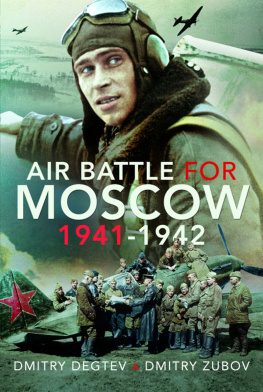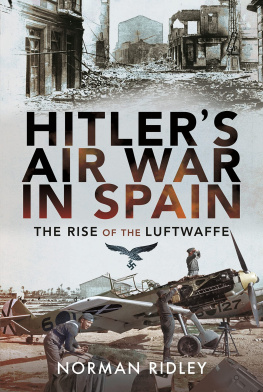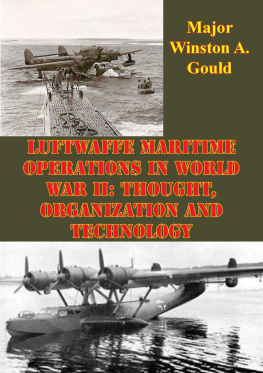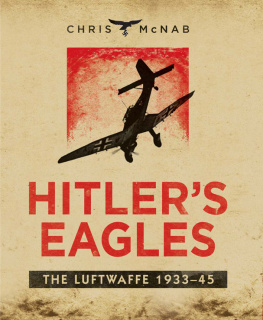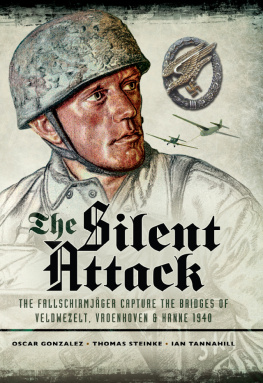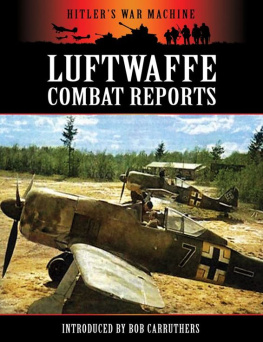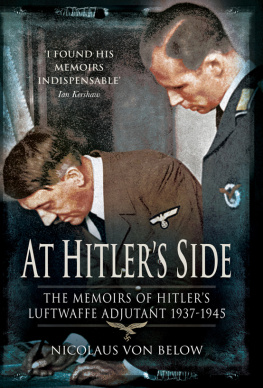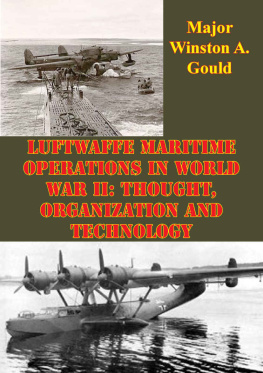Dmitry Degtev - Hitler’s Air Bridges: The Luftwaffe’s Supply Operations of the Second World War
Here you can read online Dmitry Degtev - Hitler’s Air Bridges: The Luftwaffe’s Supply Operations of the Second World War full text of the book (entire story) in english for free. Download pdf and epub, get meaning, cover and reviews about this ebook. year: 2022, publisher: Air World, genre: Non-fiction. Description of the work, (preface) as well as reviews are available. Best literature library LitArk.com created for fans of good reading and offers a wide selection of genres:
Romance novel
Science fiction
Adventure
Detective
Science
History
Home and family
Prose
Art
Politics
Computer
Non-fiction
Religion
Business
Children
Humor
Choose a favorite category and find really read worthwhile books. Enjoy immersion in the world of imagination, feel the emotions of the characters or learn something new for yourself, make an fascinating discovery.
- Book:Hitler’s Air Bridges: The Luftwaffe’s Supply Operations of the Second World War
- Author:
- Publisher:Air World
- Genre:
- Year:2022
- Rating:3 / 5
- Favourites:Add to favourites
- Your mark:
- 60
- 1
- 2
- 3
- 4
- 5
Hitler’s Air Bridges: The Luftwaffe’s Supply Operations of the Second World War: summary, description and annotation
We offer to read an annotation, description, summary or preface (depends on what the author of the book "Hitler’s Air Bridges: The Luftwaffe’s Supply Operations of the Second World War" wrote himself). If you haven't found the necessary information about the book — write in the comments, we will try to find it.
Hitler’s Air Bridges: The Luftwaffe’s Supply Operations of the Second World War — read online for free the complete book (whole text) full work
Below is the text of the book, divided by pages. System saving the place of the last page read, allows you to conveniently read the book "Hitler’s Air Bridges: The Luftwaffe’s Supply Operations of the Second World War" online for free, without having to search again every time where you left off. Put a bookmark, and you can go to the page where you finished reading at any time.
Font size:
Interval:
Bookmark:
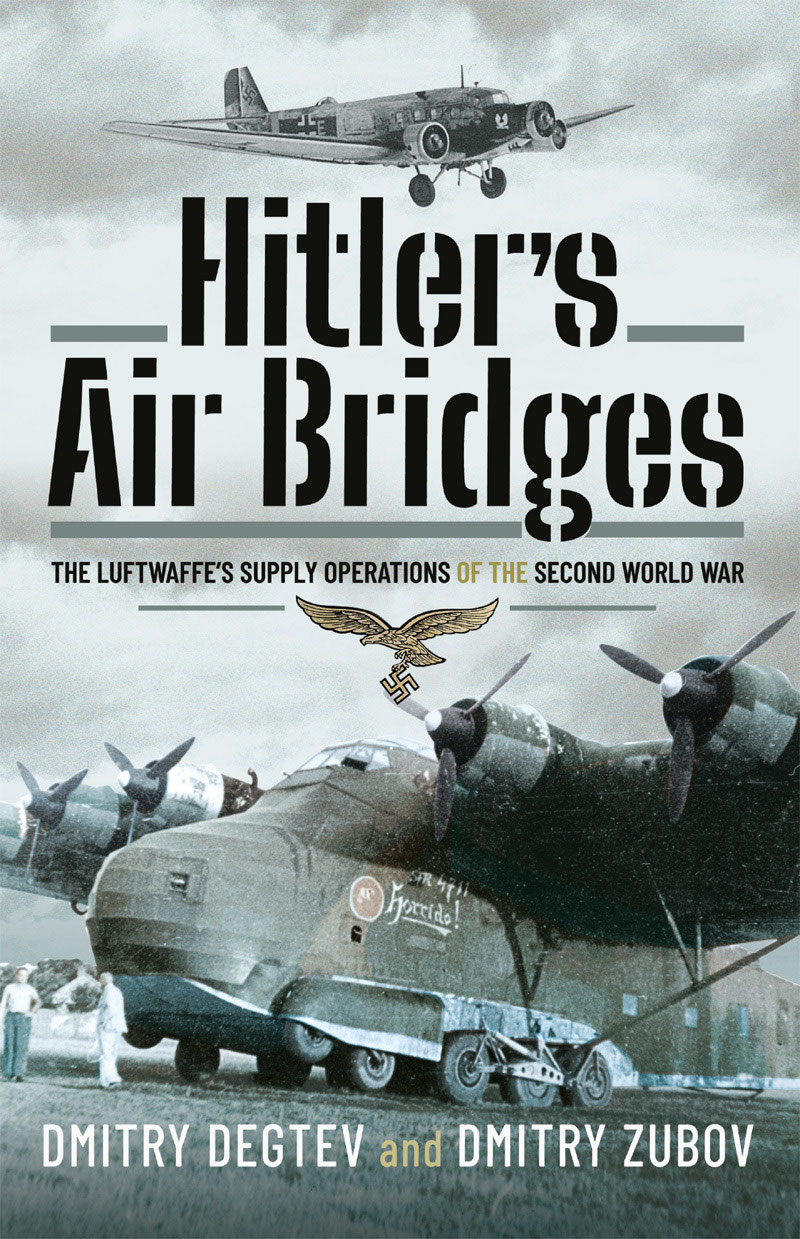

Hitlers
Air Bridges
Hitlers
Air Bridges
The Luftwaffes Supply Operations of the Second World War
DMITRY DEGTEV AND DMITRY ZUBOV


HITLERS AIR BRIDGES
The Luftwaffes Supply Operations of the Second World War
First published in Great Britain in 2022 by
Air World
An imprint of
Pen & Sword Books Ltd
Yorkshire Philadelphia
Copyright Dmitry Degtev and Dmitry Zubov, 2022
ISBN 978 1 39901 562 2
Epub ISBN 978 1 52678 994 5
Mobi ISBN 978 1 52678 994 5
The right of Dmitry Degtev and Dmitry Zubov to be identified as the Authors of this work has been asserted by them in accordance with the Copyright, Designs and Patents Act 1988. A CIP catalogue record for this book is available from the British Library All rights reserved.
No part of this book may be reproduced or transmitted in any form or by any means, electronic or mechanical including photocopying, recording or by any information storage and retrieval system, without permission from the Publisher in writing.
Pen & Sword Books Ltd incorporates the imprints of Pen & Sword Archaeology, Air World Books, Atlas, Aviation, Battleground, Discovery, Family History, History, Maritime, Military, Naval, Politics, Social History, Transport, True Crime, Claymore Press, Frontline Books, Praetorian Press, Seaforth Publishing and White Owl
For a complete list of Pen & Sword titles please contact:
PEN & SWORD BOOKS LTD
47 Church Street, Barnsley, South Yorkshire, S70 2AS, UK.
E-mail: enquiries@pen-and-sword.co.uk
Website: www.pen-and-sword.co.uk
Or
PEN AND SWORD BOOKS,
1950 Lawrence Roadd, Havertown, PA 19083, USA
E-mail: Uspen-and-sword@casematepublishers.com
Website: www.penandswordbooks.com
Ukraine. February 1944. German tanks, sinking in the mud, rush to help the 50,000 German troops, surrounded by the Russians in the area of the city of Korsun. Due to the thaw and Rasputitsa (season of bad roads), heavy armored vehicles consume three times more fuel than usual. But the fuel trucks are hopelessly stuck. The crews have no choice but to resort to delivering fuel on foot in buckets. However, the carriers do not cope well with the task, soldiers boots constantly get stuck in the clinging mud, then in the soft snow. Shells are also sorely lacking. It seems that the Germans will not be able to break through to their surrounded comrades in such conditions
But soon, out of the fog at a low level, splattered with mud and covered with soot, appear outwardly-clumsy Ju 52 transport planes! To get away from anti-aircraft fire, desperate pilots descend almost to the ground, literally hiding behind trees or low hills. Containers of ammunition, gasoline, and food rations fall to the sides of muddy roads. Mud and snow so soften the impact of the container on the ground that even packed in heavy boxes, shells for tank guns do not suffer any damage. With the delivery of gasoline things are more difficult. Every fifth barrel of fuel explodes on impact. But the rest reach the addressees! When night falls and the frost hardens the mud, the most experienced pilots land in the open area along the roads by the beam of their headlights. And the German soldiers understand that nothing is impossible for the aircraft affectionately nicknamed Aunt Ju
Such is a typical episode from the combat work of Luftwaffe transport aircraft during the Second World War. This book is dedicated to these dangerous and dramatic missions and their bitter results.
Initially, this type of aviation was created in the Third Reich to serve the airborne forces. In October 1937, during another Luftwaffe reorganization, the 4th group of the 152nd bombardment squadron Hindenburg (IV./KG 152) was converted to KGr.zbV (special purpose combat air group). In the summer of 1939, it was reformed as a special purpose combat squadron (Geschwader) KGzbV 1. However, the transport Geschwader was rather an exception, mainly the Luftwaffe command followed the path of creating separate air groups (Gruppen). Until the end of 1939 were additionally formed KGr.zbV 101, KGr.zbV 102, KGr.zbV 103, KGr.zbV 104, KGr.zbV 105, KGr.zbV 106, KGr.zbV 107 and KGzbV 172. By September 1939, the Luftwaffe had a total of 400 Ju 52/3m, and transport aircraft was thus already a fairly impressive force.
These units were first used during the Polish campaign in 1939. Then they were applied during the occupation of Denmark, Norway, Holland, Belgium, and Greece. Airborne forces captured airfields, fortresses, and strategic bridges. Parachutists suddenly descended from the sky directly on the heads of the enemy, preparing a beachhead for the main landing. But even if some airfields could not be captured on the move, the Ju 52s still landed directly under fire, ensuring success.
Already in early May 1940, transport planes was first assigned the task of supplying German troops cut off behind enemy lines by air. During this period, a critical situation developed in the north of Norway. General Eduard Dietls 3rd mountain division was blocked by the Allies in the Narvik area. Air groups KGr.zbV 107 and KGr.zbV 108 received an order to supply this division by air. In fact, this was the first Luftwaffe air bridge in history between the rear and the blocked German troops. In addition to ammunition, food and medicine, cargo aircraft delivered a large number of soldiers boots to German sailors who ended up on the beach after a battle with the British fleet. And later, KGr.zbV 102, which joined the operation, delivered a battery of 75 mm mountain guns and shells to them.
Some of the aircraft in these missions were, in essence, used only once. The fact is that canisters of fuel, unlike conventional cargo containers, could not be dropped by parachute. Therefore the Ju 52 pilots had to land on the ice of lakes in the area of Bardufoss. The length of these lakes was too short for the plane to take off again, however. Used in this way transport planes had to be simply abandoned, and the crews had to join the ground forces. Then, during the spring ice melt, the planes sank.
On 12 May, the Allies occupied the northern part of Narvik after prolonged fighting, and on 28 May, they liberated the entire city and forced the Germans to withdraw to Vestfjorden. But the difficult situation in France forced them to evacuate all their troops from Norway on 38 June. On 10 June, the Norwegian army capitulated, and by 16 June, the Wehrmacht had captured the whole of the country. In the overall success of this adventurous operation, the share of transport planes was very significant. In fact, it was here that the real combat capabilities of airborne forces and transport aircraft were shown for the first time. In total, during the Norwegian campaign, German transport aircraft performed 3,018 sorties, transported almost 30,000 people, and delivered 2,376 tons of cargo (including 1,180 tons of gasoline).
The last major operation of this kind was the capture of the island of Crete in May 1941. In the future, airborne forces were rarely used, and the main mission of transport aircraft was to supply the ground forces. In June, Germany attacked the Soviet Union, and Hitlers Panzer divisions rushed deep into the vast country. There, the Germans faced a lack of normal roads, an almost complete lack of civilization in entire regions, severe weather, and other difficulties. Military communications stretched for many hundreds and thousands of kilometers, and it was impossible to organize supplies by traditional methods. Therefore, such missions were increasingly performed by transport planes. At first, only four air groups were used to supply the troops: IV./KGzbV 1, KGr.zbV 50, KGr.zbV 102 and KGr.zbV 106. They were later joined by I./LLG 1, I. II./KGzbV 1, KGr.zbV 101, KGr.zbV 104 and KGr.zbV 105. In addition, DFS 230, Go 242 gliders and even the Me 323 Giant had to be used for cargo delivery. All of them were created for airborne operations, but eventually went to Russia to carry food and ammunition.
Font size:
Interval:
Bookmark:
Similar books «Hitler’s Air Bridges: The Luftwaffe’s Supply Operations of the Second World War»
Look at similar books to Hitler’s Air Bridges: The Luftwaffe’s Supply Operations of the Second World War. We have selected literature similar in name and meaning in the hope of providing readers with more options to find new, interesting, not yet read works.
Discussion, reviews of the book Hitler’s Air Bridges: The Luftwaffe’s Supply Operations of the Second World War and just readers' own opinions. Leave your comments, write what you think about the work, its meaning or the main characters. Specify what exactly you liked and what you didn't like, and why you think so.



